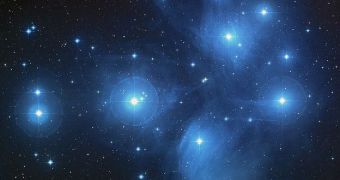Physicists at the Case Western Reserve University (CWRU) propose that the death of stars is not a process that can be fully explained using existing knowledge. They argue that a previously undiscovered type of star is formed when regular precursors die and have dubbed the new celestial object an electroweak star. The team argues that this stage occurs shortly before the star collapses into a black hole, or instead of it. Details of the group's proposal appear in a paper it submitted for publication to the respected scientific journal Physical Review Letters, and that already appears online in arXiv.
In “normal” stars, their power is drawn from the nuclear fusion reaction that sees hydrogen turned into helium. Unlike these objects, electroweak stars are hypothesized to be powered by the total conversion of quarks into leptons. These classes of particles are the basis of the Standard Model in physics. The quarks are the building blocks for hydrogen and helium, and the CWRU team proposes that they turn into leptons, a class of elementary particles that includes electrons and neutrinos. The latter are very elusive, nearly massless particles that can pass effortlessly through solid matter.
“This is a process predicted by the well-tested Standard Model of particle physics,” CWRU Professor of Physics Glenn Starkman explains. The expert believes that the process is so rare, that it most likely never happened in the Universe in the last ten billion years, except maybe at the core of electroweak stars. Former graduate students and post-docs De-Chang Dai and Dejan Stojkovic, together with Massachusetts Institute of Technology (MIT) Lincoln Lab expert Arthur Lue, have also contributed to the new research.
The team says that, in the case of massive stars reaching the end of their burning cycles, the most likely faith they can expect is collapsing into a black hole. The team adds that, in the stage that precedes this collapse, the temperatures and other conditions inside the dying stars are exactly the right ones to allow for the conversion of quarks into leptons. The stage itself can be known as an electroweak star, the team argues in the journal entry.

 14 DAY TRIAL //
14 DAY TRIAL //